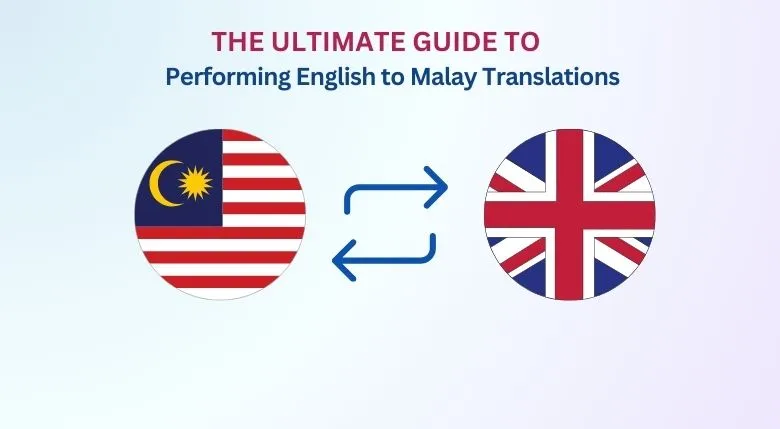 Did you know that Malay (Bahasa Melayu) is spoken by more than 290 million people globally, primarily in Malaysia, Brunei, Indonesia, and Singapore? As people, businesses, and communities connect across and beyond territorial borders, the demand for Indonesian translations has increased.
Did you know that Malay (Bahasa Melayu) is spoken by more than 290 million people globally, primarily in Malaysia, Brunei, Indonesia, and Singapore? As people, businesses, and communities connect across and beyond territorial borders, the demand for Indonesian translations has increased.
Whether one is a professional translator or just beginning their journey into multilingual communication, learning how to effectively translate English to Malay can be a useful skill. It involves considering both linguistic and cultural factors to ensure accuracy and maintain clarity. As the importance of this language grows in the fields of education, business, and technology, mastering its translations can create ample opportunities.
In this blog, we’ll explore the key steps and tips to achieve effective translations.
• Decode the Cultural and Linguistic Differences
Before starting the mechanics of the translation process, it is important to decode and understand the cultural and linguistic differences between both languages. While English uses the Latin alphabet and follows a subject-verb structure for sentences, Malaya also uses the Latin alphabet but follows a simpler grammatical structure. Malay is known for its agglutinative nature, which involves adding prefixes and suffixes to the root words to convey the mood, formality, and tense.
This means that a direct word-to-word translation between two languages would be highly impractical. Therefore, understanding idioms, everyday expressions, and cultural meanings is important when converting from English to Malaya.
For instance, the English idiom ‘it’s raining cats and dogs,’ which means it’s raining heavily, has a Malaya equivalent: ‘Hujan Libat,’ which also means heavy rain.
• Establish a Clear Understanding of the Source Text
Before undertaking the translation, it is important to thoroughly read and understand the source text, as any misinterpretation would lead to inaccuracies. It’s ideal to break the text into main ideas, key terms, and phrases that could have multiple meanings or require cultural modification.
- Identify and adjust the tone and style of the text, whether it is formal, casual, technical, or persuasive.
- Recognize the terms that are specific to the context; for example, legal documents, medical papers, and marketing materials will all have specific jargon and vocabulary. Correct identification of these terms will result in accurate translations.
It might also interest you to explore the role of language in preserving culture, the various challenges associated with it, and the recommended solutions. If you want to learn more, you can read this engaging blog on Translating Traditions: Role of Language in Cultural Preservation, Challenges, and Way Forward.
• Attend to the Grammatical Structure
While converting from English to Melayu, the grammar and sentence structure should be accordingly adjusted to maintain a natural flow. For instance, in English, the verbs change based on the tense––like run, ran, and running. But in Melayu, the verbs remain unchanged, with tense indicated by time markers like sudah (already) or akan (will). So ‘She has already eaten’ translates to ‘Dia Sudah Makan.’
WANT TO ENTER THE VIBRANT SOUTH ASIAN MARKET?
Achieve that with Somya Translators’ expert translation services.
• Choose Accurate Vocabulary
Malay has a rich vocabulary with words borrowed from languages like Sanskrit, Tamil, and Arabic. Choosing the appropriate words during the conversion is important. Maintaining uniformity in terminology, especially in specialized areas like law, finance, or medicine, is key to professional translation. In some cases, Malay uses English loanwords, especially for technical terms; for example, ‘Komputer’ for computer.
• Emphasize the Formality Levels
Malay comes from the family of Asian languages, which places a strong emphasis on formality levels that depend upon the context and target demographic. Different pronouns and forms of verbs are used depending on the speaker’s relationship with their audience. Therefore, understanding the right level of formality is important, especially in official documents where the wrong tone can come across as disrespectful or casual.
Case Study: An American software company wanted to extend its branch to Singapore. It hired professional Malay website localization services to offer culturally correct and linguistically accurate user experiences to the customer groups based in Singapore. By hiring professional services, the software company successfully established itself and captured Malay-speaking customers.
You might be interested in exploring the highly demanding languages in which marketing campaigns must be translated. If so, please read this informational piece to learn more: Languages in Which You Must Translate Your Marketing Campaigns.
• Combine Human Translations with Machine Tools
Online translation tools like Google Translate can be quite helpful for completing the basic translations or for quickly finding the meaning of words. However, such tools often struggle with the context and idiomatic expressions, which can lead to unsuitable results.
Instead, using these tools for reference alongside human translations and cross-checking with trusted dictionaries and linguistic resources can be quite helpful in delivering accurate and time-efficient projects.
Conclusion
Mastering the English to Malay translations is a tedious process that demands linguistic skills, cultural insights, and careful attention to the detail about the South Asian market. By understanding both languages’ grammar and context, translators can render successful translations. Investing in expert language service providers like Somya Translators, who also offer deft Malay subtitling services, can be highly beneficial. Contact Somya Translators today and grab yourself a free quote!







